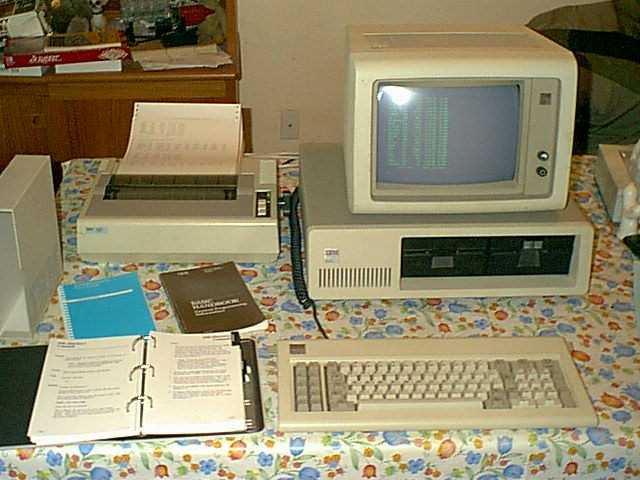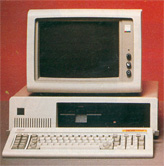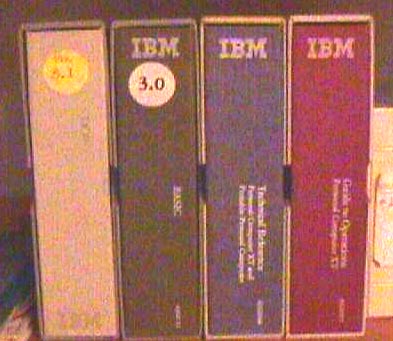![]()
The first PC was the IBM 5150, which was followed by the IBM XT (5160).
These machines started the PC revolution, that's why we have so many computers today. Without the two IBMs, we might be using Apples right now...or maybe we'll just have to live without computers (not sure how!) Personally, I use MacOS on an IBM. A program called "BasiliskII" makes it possible.
Most people don't know what they are and when they were made, because they were first sold in 1981. It might be interesting to know what they had back then! It'd make your old Pentium 90 seem fast!

IBM PC 5150 with printer, two floppy drives and5151
MDA display.
The IBM PC (5150) was designed to compete directly with Apple's Apple II, which was the first widely used personal computer. While the computer was being designed, IBM referred to it as Project Chess and Acorn. The designers were called the IBM "Dirty Dozen", they were a group of 12 IBM designers, IBM choose only 12 people because they didn't want to have the project slow down with too many people. All this took place in Boca Raton, an empty place so no companies would suspect anything.
The IBM PC had a 5 1/4 360KB floppy drive, an Intel or AMD 8088 CPU, 64KB of RAM, and a MDA (monochrome display adapter). Ports include serial, parallel (on MDA) a 9-pin video port and a large connector that allowed up to two external floppy drives.
Options
include another floppy drive, a color CGA (color graphics array) card and
monitor which lets you see color and crude graphics, more RAM (up to 640KBwith
a 256/640 motherboard and up to 256 KB with a 64/256 motherboard) and a
printer. With all the options from IBM, it would cost more than $15,000,
just for a computer that has a 4.77 MHz
8088.



IBM XT 5160 with EGA
monitor. IBM XT
Manuals Big
red power switch on the side.
The IBM XT (5160), which was introduced a year later, included a 10 or 20MB hard drive, which seemed like all the storage anyone would need, more expansion (8 8-bit ISA connections, 7 not counting the IBM A-Sync connection), plus, you get all the other things offered in the IBM PC 5150 less the cassette port)
Options were all the PC options plus an EGA (enhanced graphics array) card and monitor (which provided better color and graphics than the CGA), a 20 MB hard drive, a new keyboard with key lock indicators, and a mouse to go with your computer, which could run Microsoft Windows 1.00.
The IBM PC and XTs were very heavy, the monitor, system, and keyboard together may weigh over 60 pounds with all drives installed.
The IBMs were very well built and many are still working today, if people haven't recycled them. Many libraries and educational institutions are still using them today to access their database.
When IBM sold their personal computers, they broke their old custom of keeping everything proprietary. Before the PC, IBM products weren't compatible with other products, and had to be leased, instead bought. IBM knew that the Apple II was very successful because people could write software for it and there were many options from third party suppliers. IBM made the PC an open architecture, that made other companies be able to make similar computers, but, as long as IBM could make the best computers, they have the market.
I had an IBM PC (5150), but, I didn't know what it was back then and threw it out, thinking it was some old computer that won't go online... maybe Best Buy still has one in storage?
If you ever find one of these in your basement, don't throw it away, clean it, and put it on a display stand...if you don't want it you could always give it to me...
Links...probably a little more informative
than mine...
The Old PC Page, links to PC&XT and some other old computers personal.nbnet.nb.ca/gallante/ibmcpu/
The
Uncreative Labs Corporate site... not a company, buta bunch of people who
really like old computers.
http://www.cyberusa.com/~cholowat/
Thehistory of
the 5150, and its origin.
http://www.fortunecity.com/marina/reach/435/ibm5150.htm